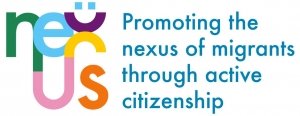Tu derecho a saber / Your right to know
Your right to know was the first platform in Spain that enabled users to easily request information from any public institution, even when there was no Transparency Act enacted.
Tool Self-Assessmet
- Reflect back on the objective of the tool you built: did you exceed it, or fall short? If so, why?
Your right to know was the first web in Spain that enabled users to easily request information from any public institution, even when there was no Transparency Act enacted. It was a joint initiative by Civio and Access Info Europe, and it launched in March 2012. The project also served as an advocacy tool, and created social awareness about the need for transparency.
This is a Spanish version of another Anglo-Saxon tool made by MySociety, which is in several countries and was an adaptation of the code. The aim was to allow citizens to request information from the administration in a public way by automatically sending e-mails.
We consider it a success story because in Spain at that time there was no transparency law, so the tool served as a lever to expose the problem, rather than to obtain real answers, because often the institutions did not respond to citizens.
It was a good tool to bring to light how transparency worked in practice, which in Spain was something new. Then the law came out and it was said that it did not work through email, but through a digital certificate, and it was very complicated at a technical level, so due to the legal situation, the website had to be closed in 2015.
- What are the tools’ metrics for success and what does metric say – how well did the tool do?
Your right to know channeled, while it was available, over 1,800 requests for information, putting some 900 agencies and public administrations within reach of a single click. Around 400,000 people visited the site, which showed both the requests and the responses of the administrations. And many thousands more, through its blog, received accurate information about the Transparency Act, its practical use, limits and implementation. It was also a powerful lobby tool.
- Were your assumptions that the tool you built would: increase participation/engagement or tackle an issue/raise awareness correct? Do you think you chose the right approach – and what would you do differently?
We believe we reached the target audience, which was the most motivated people and a few others. The objective of attracting motivated people and others who had never applied before was partially achieved, but partially. We thought there would be more questions (requests) because at that time Change.org was in fashion, but we realised that it was much more difficult than for Change.org, because it was about asking a specific question, you had to think and it is difficult to ask and ask for specific information, but above all because there was a lack of practice. In Spain it was not common, there was no culture of asking the government. Even when the law was passed, it was not widely publicized.
In one year there were several hundred requests of information sent, so they were not massive numbers, and in addition, it often tool did not work because officials did not tend to respond, but it was a success in the sense that it ignited the flame.
- What are you hearing from users? What do they enjoy in tool? What do they find challenging?
The feedback to the tool was good, although there weren’t many responses to Requests.
- What worked well through the implementation process? What areas have room for improvement?
The information we got was useful: requests for information are not a mass thing.
And we understood that this is a gradual process, and that in countries like Spain it costs a lot, and it was a learning experience: that is also a bit of learning, that copying something in our environment doesn’t work as well as the other, you have to adapt to the specific context.
But the overall experience was very positive.
Tool ID
- GOAL:Increasing government transparency through Request of Information
- Made by:Civio (contacto@civio.es)
- Country:Spain
- YEARS ACTIVE:2012-2015


